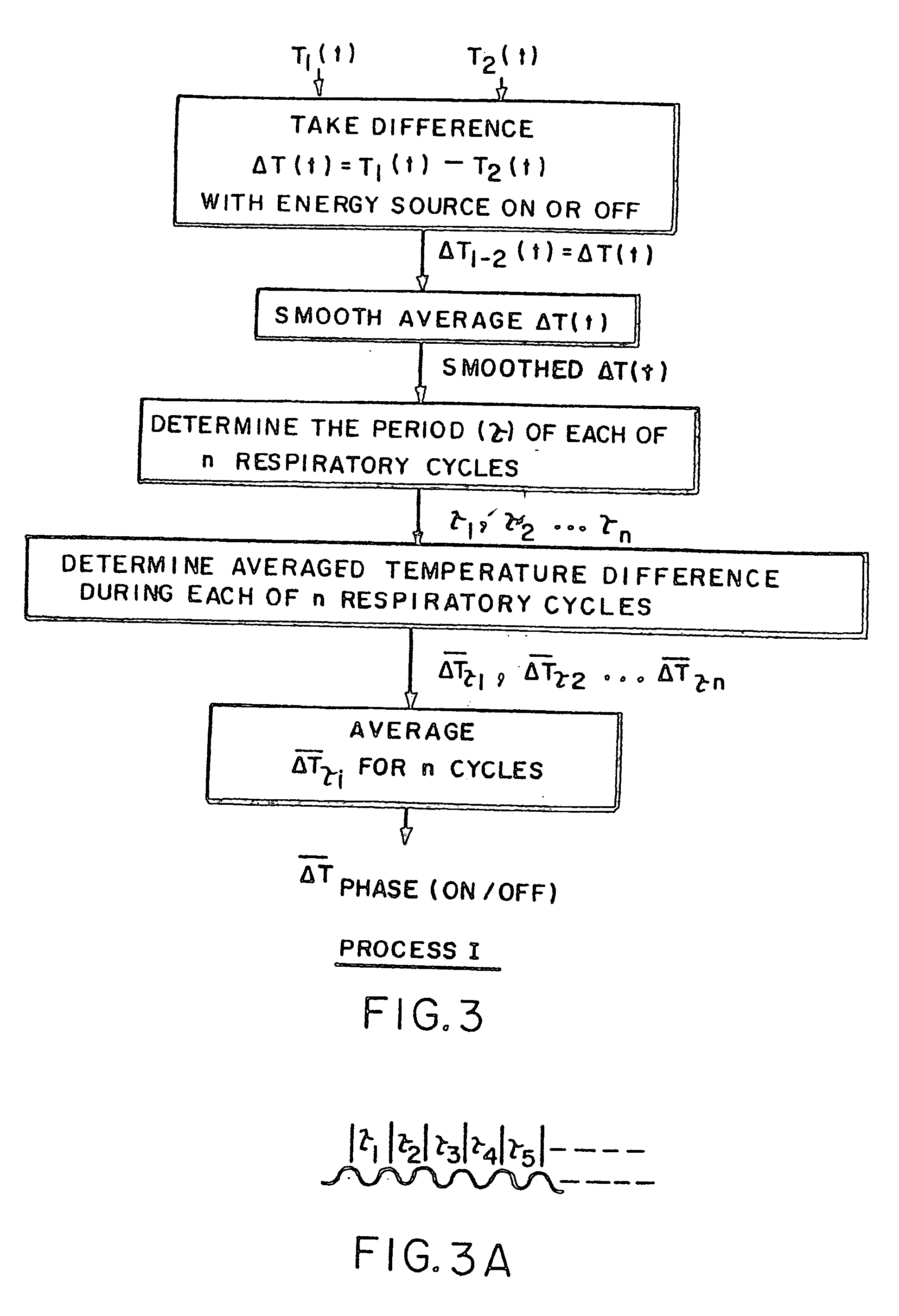Blood flow monitor with venous and arterial sensors
a blood flow monitor and sensor technology, applied in the field of blood flow monitors with venous and arterial sensors, can solve problems such as thermal fluctuations inherent in the bloodstream, and achieve the effect of low thermal energy level
- Summary
- Abstract
- Description
- Claims
- Application Information
AI Technical Summary
Benefits of technology
Problems solved by technology
Method used
Image
Examples
Embodiment Construction
[0015] The invention is described in detail with the help of the accompanying drawings wherein:
[0016] FIG. 1 shows a simplified diagrammatic view of a human heart;
[0017] FIG. 2 shows a simplified diagrammatic view of a catheter useful in the invention;
[0018] FIG. 3 shows a flow chart depicting steps in a process used in the invention;
[0019] FIG. 3A shows a smooth temperature difference curve obtained in the process depicted in FIG. 3;
[0020] FIG. 4 shows a flow chart depicting further steps in a process used in the invention;
[0021] FIG. 5 shows a flow chart depicting still further steps in a process of the invention;
[0022] FIG. 6 shows a graph depicting a temperature / time relation used in the invention;
[0023] FIG. 7A shows a simplified diagrammatic view of another catheter used in the invention;
[0024] FIG. 7B shows a flow chart depicting steps in still another process of the invention;
[0025] FIGS. 8A, 8B and 8C show flow charts depicting modes of operating the process of the inventio...
PUM
 Login to View More
Login to View More Abstract
Description
Claims
Application Information
 Login to View More
Login to View More - R&D
- Intellectual Property
- Life Sciences
- Materials
- Tech Scout
- Unparalleled Data Quality
- Higher Quality Content
- 60% Fewer Hallucinations
Browse by: Latest US Patents, China's latest patents, Technical Efficacy Thesaurus, Application Domain, Technology Topic, Popular Technical Reports.
© 2025 PatSnap. All rights reserved.Legal|Privacy policy|Modern Slavery Act Transparency Statement|Sitemap|About US| Contact US: help@patsnap.com



